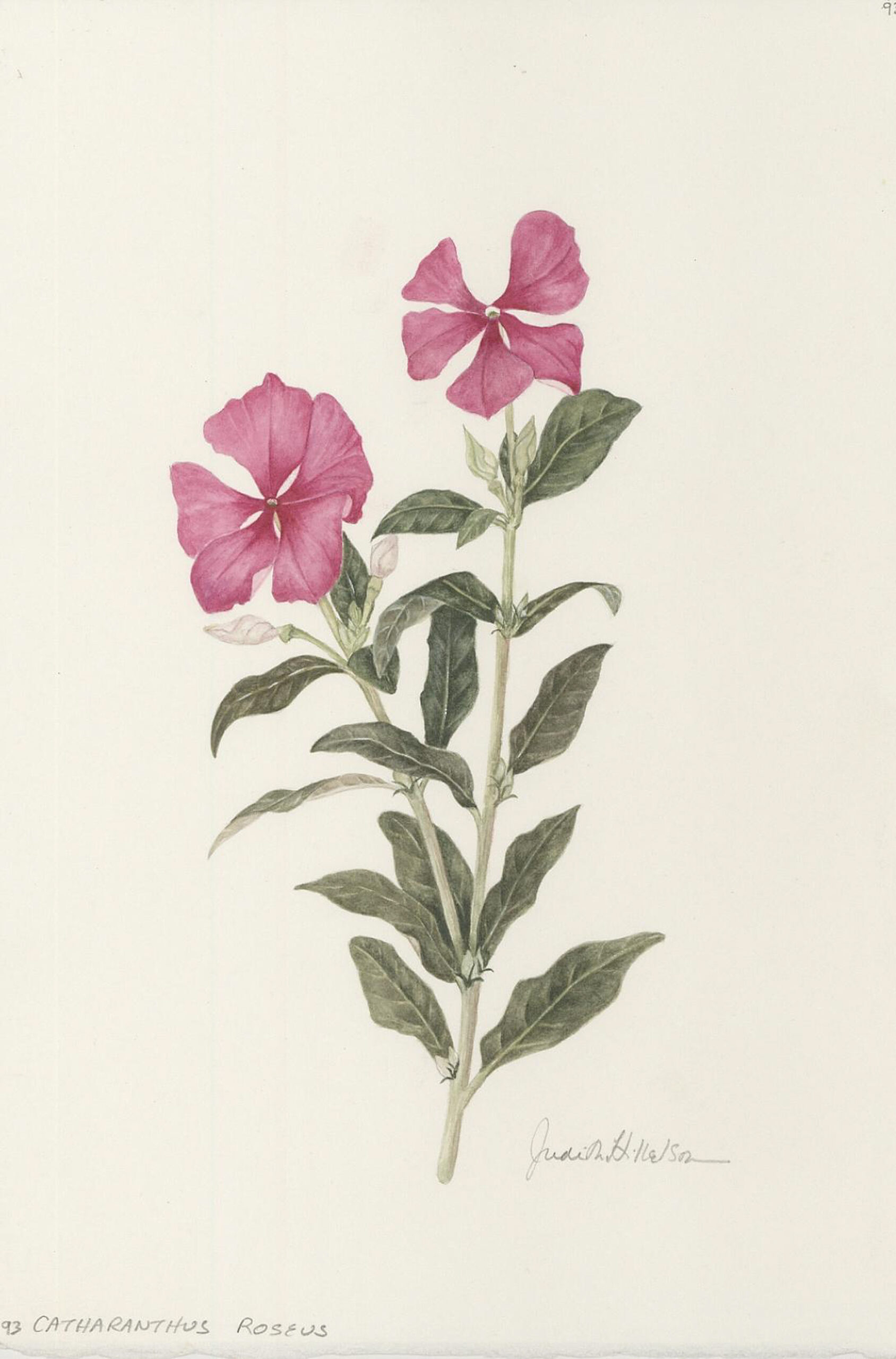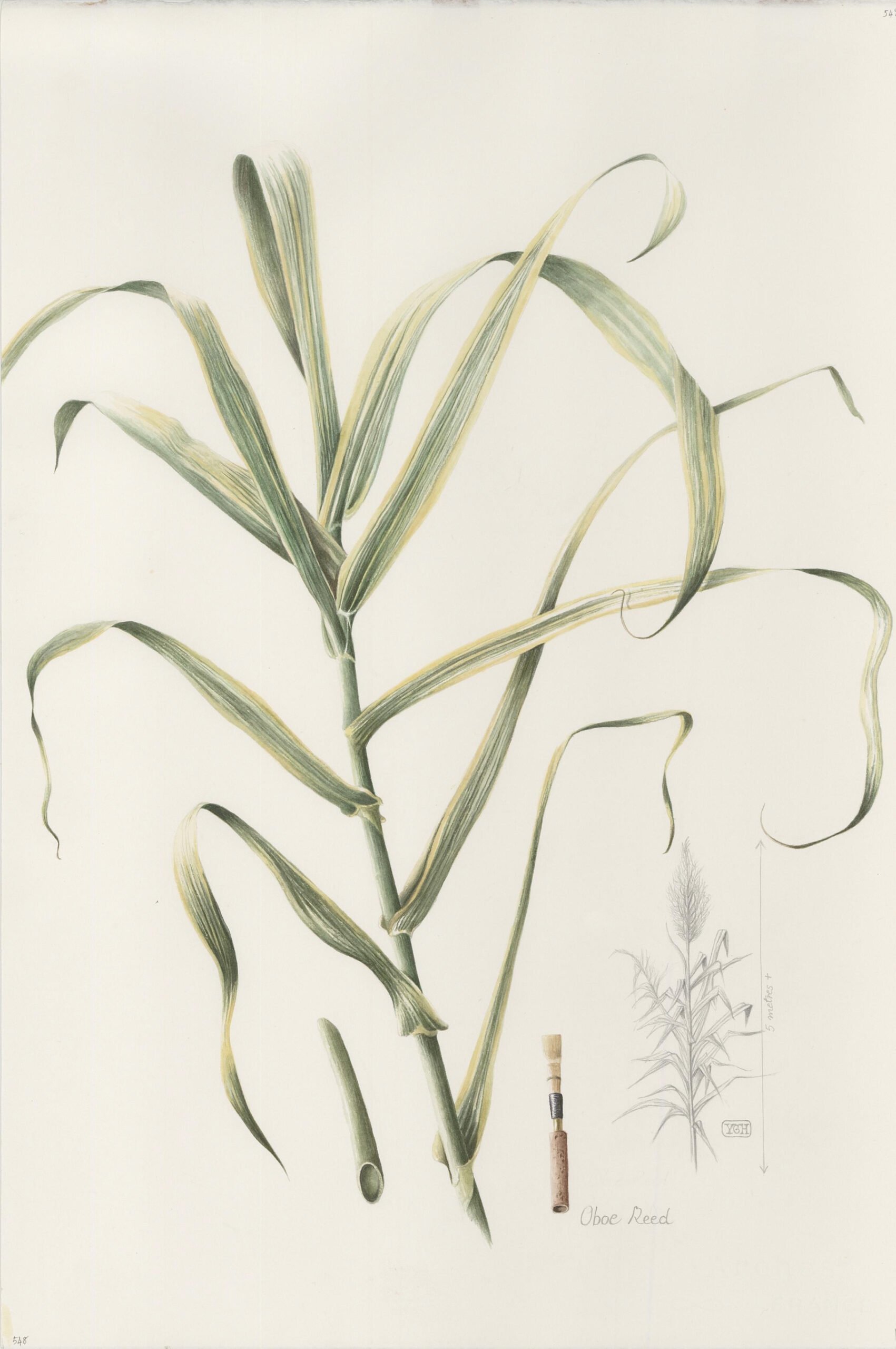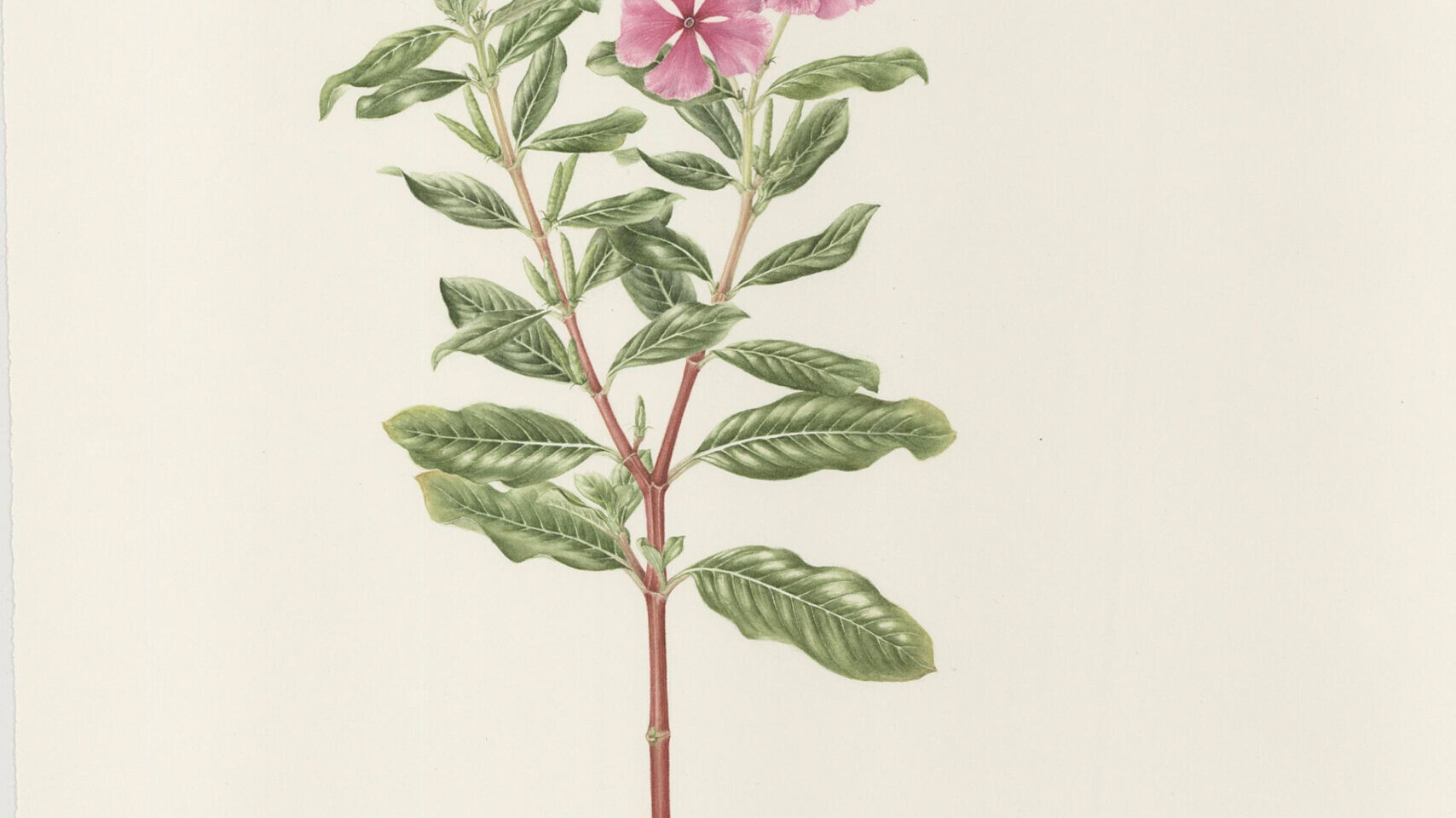The many lives of a medicinal superstar: delving into the global story of Catharanthus roseus
By Eve Barro, Assistant Project Curator at Chelsea Physic Garden
Every month, we will be labelling the plants mentioned in these blogs to bring our stories to life, so keep an eye out for the circular green labels during your next visit. A full list of these plants can be found at the end of the blog.
This month I decided to investigate the story of a plant which revolutionised cancer treatment: Catharanthus roseus. Only a few names initially came up when I started researching this plant: Robert Noble and Charles Beers who isolated and patented key anti-cancer compounds from it in 1958, and Eli Lilly the pharmaceutical company that commercialised them . However, scientific discoveries are often much more complex than they appear to be and always involve a far more detailed network of supporting actors and events. The story of how this plant came to revolutionise medicine by yielding one the “earliest and most durable of effective cancer agents” is no exception (1).
Catharanthus roseus (Madagascar Periwinkle) originates from the island of Madagascar where it has been and is still used medicinally. The plant was historically used by Malagasy fishermen and mariners who “chewed the leaves of the plant between their teeth to soothe the sensation of hunger and to overcome fatigue” (2). During the golden age of the Swahili trade (800-1450), the plant was spread all over the Indian Ocean by sailors who transported cuttings. At this time, a vibrant network of trade connected Afro-Asian coastal merchant communities on the Swahili coast and Madagascar, Western and Southeast Asia, and the Arabian Peninsula. (2, 3, 4). In modern Madagascan folk medicine, the leaves and roots of the plant are sold by mpivarotra-hazo (plant-sellers) and prepared to relieve stomach aches and facilitate digestion (2).
The plant has a special place in the history of Chelsea Physic Garden. Head Gardener Philip Miller (1691-1771) was the first person to cultivate it in the UK. The plant was sent to Miller by Mr. Richard, King Louis XV’s gardener, who had been growing it at one of the Trianon’s pavilions. Mr. Richard had received the plant from Etienne de Flacourt (5). Etienne de Flacourt (1607-1660), a governor of a French East India Company colony in Madagascar, was the first European to provide a known written record of the plant in 1658. When he encountered it in the southern tip of the island, he described the plant as well as documented its local use to relieve heart problems and headaches (5). Before his death in 1660, he sent seeds and cuttings of the plant to the French Royal Garden.


Upon receiving the plant, Miller wrote about it “The Seeds of the Plant were brought from Madagascar to Paris, and sown in the King’s Garden at Trianon, where they succeeded; and from thence I was furnished with the seeds, which succeeded in the Chelsea Garden”. Miller also named the plant “Vinca foliis oblongo-ovatis integerrimis, tubo floris longissimo, caule ramoso fructicoso” (Vince with very intact oblong-ovate leaves, a long flower tube, a branchy fruiting stem) and described it as “a great novelty in Europe”. The first printed image of the plant appeared in “Figures of the most Beautiful, Useful, and Uncommon Plants described in The Gardeners Dictionary (…)” (6). The publication was composed of 300 hand-coloured engraved plates with descriptions written by Miller and issued monthly in 50 different parts between 1755 and 1760. In 1759, and on the basis of Miller’s description and Richard Lancake’s illustration, Linnaeus renamed the plant Vinca rosea , using his binomial system (5). Catharanthus roseus was then widely spread by Miller from Chelsea Physic Garden to other botanical gardens in Europe and British colonies as well as to other institutions.
The plant is part of many folk traditions all over the world, including Jamaican folk medicine, as an anti-diabetic. It could be thought that it is Miller’s action that led to the use of the plant in Jamaica. However, there is no evidence of Miller taking note of the precise medicinal use of the plant. Catharanthus roseus was mainly known as an “exotic” ornamental in Europe (7). However, it has been recorded that the way of preparing the plant decoction in Jamaica is strikingly similar to its preparation in the Philippines and South Africa. It is believed that knowledge on the plant use might have been brought to Jamaica by enslaved African people. Similar recipes have also been recorded in Mexico and the Republic of Congo. (2)
The pharmaceutical interest in the plant as a source of a marketable medicinal treatment can be traced back to two North American research groups in the 1920s. These groups were initially interested in the potential of the plant as an anti-diabetic. The Canadian group was led by Noble, the other one was associated with the pharmaceutical company Elli Lilly. The medicinal use of Catharanthus roseus was first brought to the Noble family’s attention by a person whose identity has been lost but who has been recorded under the name Miss Farquharson and has been described as a “Jamaican maid” or “a patient of Clark Noble” (Robert Noble’s brother). Miss Farquharson was aware of the use of the plant as a treatment for diabetes in Jamaica and recommended to Noble to get in contact with C.D. Johnston. C.D. Johnston was a black Jamaican doctor who had been working on the medicinal potential of the plant decoction for diabetes treatment. He is the one that sent plant leaves to Noble’s group for investigation (1).
In 1949, it was serendipitously discovered by Halina Czajkowski Robinson, a female polish immigrant working as a lab technician in Noble’s lab, that despite the plant’s apparent lack of efficacy to impact blood sugar levels, it might have a role in lowering white cell count (5). This experiment led to the isolation and purification by Charles Beers of the alkaloids, vincristine, and vinblastine in 1958. Vinblastine, which stops cell division (mitosis), can be used in the treatment of breast, ovarian, lung, testicular and bladder cancer as well as Hodgkin’s disease (9). Vincristine is a revolutionary compound that is now said to have raised the survival rate in childhood leukaemia from less than 10% in 1960 to 90% today (8).
When the compounds were discovered, the north American scientists filed patents to ensure the exclusivity of their rights to extract and market Catharanthus roseus compounds with clinical applications. The introduction and appropriation of the plant by techno-scientific organisations led to an erasure of the global ethnobotanical history of this plant. It also disabled a proper recognition of the relevance of oral tradition and community-based apprenticeship in the development of the medicinal knowledge attached to Catharanthus roseus. Today, the Convention on Biological Diversity ensures that rewards for discoveries are shared with the country from which the resource originates. However, it is still important to bear in mind that not all the individuals that contribute to the development of medical knowledge get to benefit from it and that scientific discoveries are often situated in global contexts.
Find the plants mentioned in this post during your next visit of the Garden!
- Plant 1: Catharanthus roseus
To know more
Osseo-Asare, A. D. A. (2014). Bitter roots: The search for healing plants in Africa. The University of Chicago Press.
References
(1) Duffin, J. (2000). Poisoning the spindle: Serendipity and discovery of the anti-tumor properties of the vinca alkaloids. Canadian Bulletin of Medical History, 17(1), 155–192. https://doi.org/10.3138/cbmh.17.1.155
(2) Osseo-Asare, A. D. A. (2014). Bitter roots: The search for healing plants in Africa. The University of Chicago Press.
(3) Beaujard, P. (2015). East Africa and oceanic exchange networks between the first and fifteenth centuries. Afriques, 06. https://doi.org/10.4000/afriques.3097
(4) Beaujard, P. (2019). The worlds of the indian ocean: A global history (1st ed.). Cambridge University Press. https://doi.org/10.1017/9781108341219
(5) van Bergen , M. A. (1996). Revision of Catharanthus G. Don Series of Revisions of Apocynaceae XLI (Wageningen Agricultural University Papers No. 96–3). Wageningen Agricultural University.
(6) Stearn, W. T. (1975). The chelsea physic garden 1673-1973: Three centuries of triumph in crises. A tercentenary address. Garden History, 3(2), 68. https://doi.org/10.2307/1586380
(7) Curry, H. A. (2012). Naturalising the exotic and exoticising the naturalised: Horticulture, natural history and the rosy periwinkle. Environment and History, 18(3), 343–365. https://www.jstor.org/stable/23250940
(8) Sharma, A., Tiwari, P., Arora, R., & Sankaranarayanan, A. (2022). Madagascar periwinkle alkaloids: Biosynthesis, ethnobotanical attributes, and pharmacological functions. South African Journal of Botany, 151, 108–115. https://doi.org/10.1016/j.sajb.2022.09.039
(9) Ishikawa, H., Colby, D. A., Seto, S., Va, P., Tam, A., Kakei, H., Rayl, T. J., Hwang, I., & Boger, D. L. (2009). Total synthesis of vinblastine, vincristine, related natural products, and key structural analogues. Journal of the American Chemical Society, 131(13), 4904–4916. https://doi.org/10.1021/ja809842b

